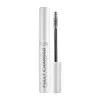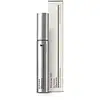What's inside
What's inside
 Key Ingredients
Key Ingredients

No key ingredients
 Benefits
Benefits

 Concerns
Concerns

 Ingredients Side-by-side
Ingredients Side-by-side

Water
Skin ConditioningGlyceryl Stearate
EmollientC18-36 Acid Triglyceride
EmollientVp/Methacrylamide/Vinyl Imidazole Copolymer
Cetyl Palmitate
EmollientStearic Acid
CleansingPropanediol
SolventSteareth-20
CleansingEuphorbia Cerifera Wax
Copernicia Cerifera Wax
Pvp
Emulsion StabilisingSteareth-2
EmulsifyingPhenoxyethanol
PreservativePolyquaternium-10
Phospholipids
Skin ConditioningHelianthus Annuus Seed Oil
EmollientPanthenol
Skin ConditioningDipropylene Glycol
HumectantMagnesium Aluminum Silicate
AbsorbentHydroxyethylcellulose
Emulsion StabilisingAminomethyl Propanol
BufferingCaprylyl Glycol
EmollientChlorophene
AntimicrobialDisodium EDTA
Water, Glyceryl Stearate, C18-36 Acid Triglyceride, Vp/Methacrylamide/Vinyl Imidazole Copolymer, Cetyl Palmitate, Stearic Acid, Propanediol, Steareth-20, Euphorbia Cerifera Wax, Copernicia Cerifera Wax, Pvp, Steareth-2, Phenoxyethanol, Polyquaternium-10, Phospholipids, Helianthus Annuus Seed Oil, Panthenol, Dipropylene Glycol, Magnesium Aluminum Silicate, Hydroxyethylcellulose, Aminomethyl Propanol, Caprylyl Glycol, Chlorophene, Disodium EDTA
Water
Skin ConditioningGlyceryl Stearate
EmollientPropylene Glycol
HumectantPvp
Emulsion StabilisingC18-36 Acid Triglyceride
EmollientCetyl Palmitate
EmollientEuphorbia Cerifera Wax
Nylon-12
Stearic Acid
CleansingVp/Eicosene Copolymer
Copernicia Cerifera Wax
Steareth-20
CleansingPersea Gratissima Oil
Skin ConditioningMyristoyl Pentapeptide-17
Skin ConditioningBiotinoyl Tripeptide-1
Xanthan Gum
EmulsifyingPanthenol
Skin ConditioningUrtica Dioica Extract
AstringentBiotin
AntiseborrhoeicTocotrienols
Skin ConditioningAminomethyl Propanol
BufferingSynthetic Fluorphlogopite
Steareth-2
EmulsifyingCyclopentasiloxane
EmollientCaprylyl Glycol
EmollientDimethiconol
EmollientHexylene Glycol
EmulsifyingPhenoxyethanol
PreservativePotassium Sorbate
PreservativeIron Oxides
Mica
Cosmetic ColorantCI 77891
Cosmetic ColorantWater, Glyceryl Stearate, Propylene Glycol, Pvp, C18-36 Acid Triglyceride, Cetyl Palmitate, Euphorbia Cerifera Wax, Nylon-12, Stearic Acid, Vp/Eicosene Copolymer, Copernicia Cerifera Wax, Steareth-20, Persea Gratissima Oil, Myristoyl Pentapeptide-17, Biotinoyl Tripeptide-1, Xanthan Gum, Panthenol, Urtica Dioica Extract, Biotin, Tocotrienols, Aminomethyl Propanol, Synthetic Fluorphlogopite, Steareth-2, Cyclopentasiloxane, Caprylyl Glycol, Dimethiconol, Hexylene Glycol, Phenoxyethanol, Potassium Sorbate, Iron Oxides, Mica, CI 77891
Ingredients Explained
These ingredients are found in both products.
Ingredients higher up in an ingredient list are typically present in a larger amount.
Aminomethyl Propanol is used to adjust the pH of products. It is also used as a base to create other organic compounds. Having a balanced pH is important for protecting your skin.
Aminomethyl propanol is safe to use in cosmetics up to 1%. It is soluble in water.
We don't have a description for C18-36 Acid Triglyceride yet.
Caprylyl Glycol is a humectant and emollient, meaning it attracts and preserves moisture.
It is a common ingredient in many products, especially those designed to hydrate skin. The primary benefits are retaining moisture, skin softening, and promoting a healthy skin barrier.
Though Caprylyl Glycol is an alcohol derived from fatty acids, it is not the kind that can dry out skin.
This ingredient is also used as a preservative to extend the life of products. It has slight antimicrobial properties.
Learn more about Caprylyl GlycolCetyl Palmitate is a wax-like substance.
It comes from palmitic acid and palmityl alcohol. Cetyl Palmitate may not be safe for Malassezia folliculitis, or fungal-acne.
This ingredient is naturally found in the guava fruit and stony corals.
Learn more about Cetyl PalmitateCopernicia Cerifera Wax comes from a palm tree native to Brazil; another name for this ingredient is Carnauba Wax.
This ingredient is used to thicken texture and also leaves behind a film when applied.
Fun fact: This wax has the highest melting point of all natural waxes and low solubility.
Learn more about Copernicia Cerifera WaxGlyceryl Stearate is a mix of glycerin and stearic acid.
It is used to stabilize the mixing of water and oil ingredients. By preventing these ingredients from separating, it can help elongate shelf life. It can also help thicken the product's texture.
As an emollient, it helps soften skin and supports barrier-replenishing ingredients.
In cosmetics, Glyceryl Stearate is often made from vegetable oils or synthetically produced.
This ingredient may not be fungal-acne safe
Fun fact: The human body also creates Glyceryl Stearate naturally.
Learn more about Glyceryl StearatePanthenol is a common ingredient that helps hydrate and soothe the skin. It is found naturally in our skin and hair.
There are two forms of panthenol: D and L.
D-panthenol is also known as dexpanthenol. Most cosmetics use dexpanthenol or a mixture of D and L-panthenol.
Panthenol is famous due to its ability to go deeper into the skin's layers. Using this ingredient has numerous pros (and no cons):
Like hyaluronic acid, panthenol is a humectant. Humectants are able to bind and hold large amounts of water to keep skin hydrated.
This ingredient works well for wound healing. It works by increasing tissue in the wound and helps close open wounds.
Once oxidized, panthenol converts to pantothenic acid. Panthothenic acid is found in all living cells.
This ingredient is also referred to as pro-vitamin B5.
Learn more about PanthenolPhenoxyethanol is a preservative that has germicide, antimicrobial, and aromatic properties. Studies show that phenoxyethanol can prevent microbial growth. By itself, it has a scent that is similar to that of a rose.
It's often used in formulations along with Caprylyl Glycol to preserve the shelf life of products.
Pvp is a water-soluble synthetic polymer and common hairstyling ingredient. It is a film-forming ingredient and used to "hold" specific shapes of hair.
Pvp is less effective in high-humidity. It tends to draw moisture, but this moisture dismantles the structure and "hold".
Steareth-2 is a waxy compound used to emulsify ingredients. It is created from polyethylene glycol and stearyl alcohol.
The 2 stands for the number of ethylene oxide units used to create this ingredient.
Steareth-20 is a waxy compound used to emulsify ingredients. It is created from stearyl alcohol.
It possesses surfactant properties. This means it reduces surface tension and helps oils, dirt, and pollutants to be washed away.
The 20 stands for the number of ethylene oxide used to create this ingredient.
Learn more about Steareth-20Stearic Acid is a fatty acid. It is an emollient, emulsifier, and texture enhancer.
As an emollient, stearic acid helps soften skin. It aids the skin's protective barrier by preventing water loss. It also provides a gentle cleansing effect without stripping away natural oils.
Stearic acid may also be used to enhance the texture of products. It can add volume and stabilize ingredients such as water and oil. This can help water and oil ingredients from separating.
Sources of stearic acid include animal or vegetable fats/oils such as coconut or shea. It can be naturally found in butter, cocoa butter, shea butter, vegetable fats, and animal tallow.
This ingredient may not be Malassezia folliculitis, or fungal-acne safe.
Learn more about Stearic AcidWater. It's the most common cosmetic ingredient of all. You'll usually see it at the top of ingredient lists, meaning that it makes up the largest part of the product.
So why is it so popular? Water most often acts as a solvent - this means that it helps dissolve other ingredients into the formulation.
You'll also recognize water as that liquid we all need to stay alive. If you see this, drink a glass of water. Stay hydrated!
Learn more about WaterEuphorbia Cerifera wax comes from a shrub in Northern Mexico. It is used to stabilize formulations and has emollient properties.
Emollients form a thin layer on top of skin to prevent water from evaporating, keeping skin and lips hydrated.
According to a manufacturer, this wax can range from a yellow/brown color to translucent.
Learn more about Euphorbia Cerifera Wax